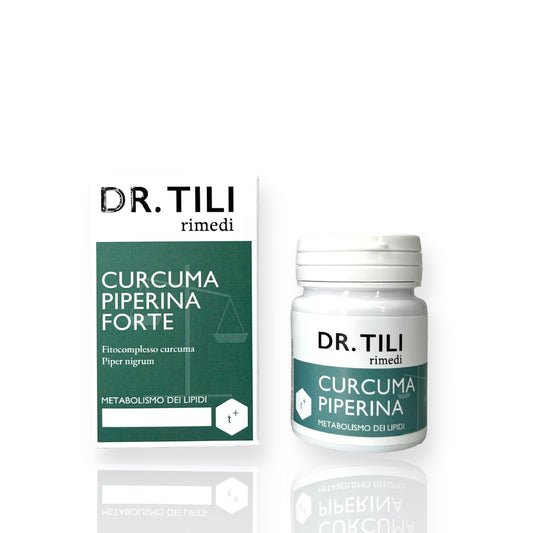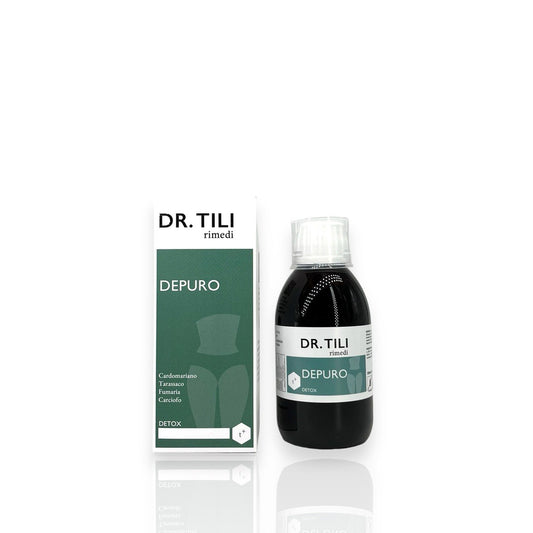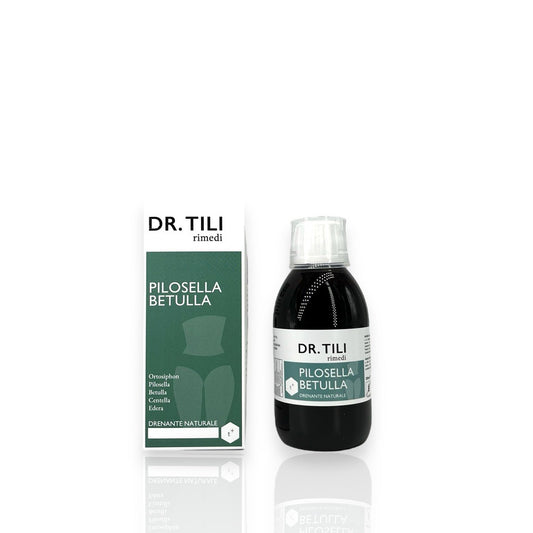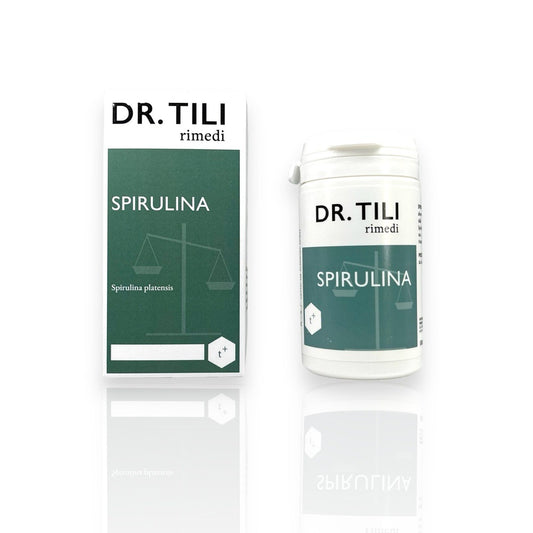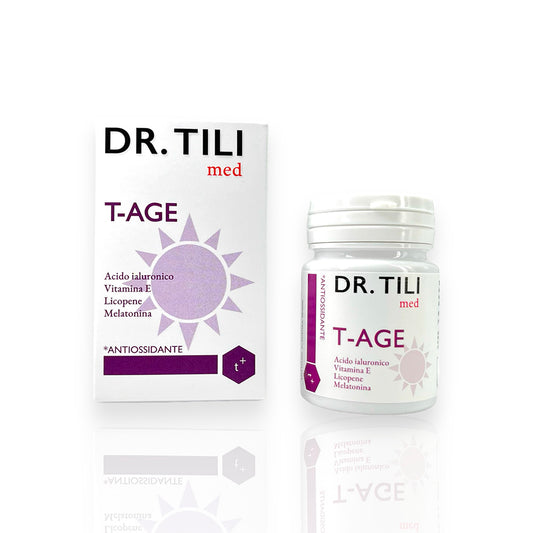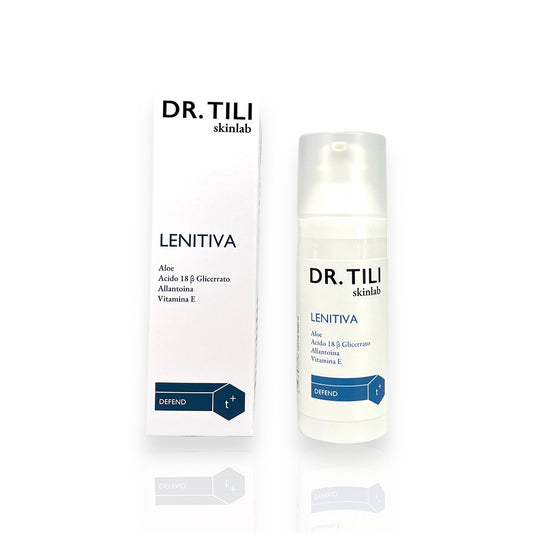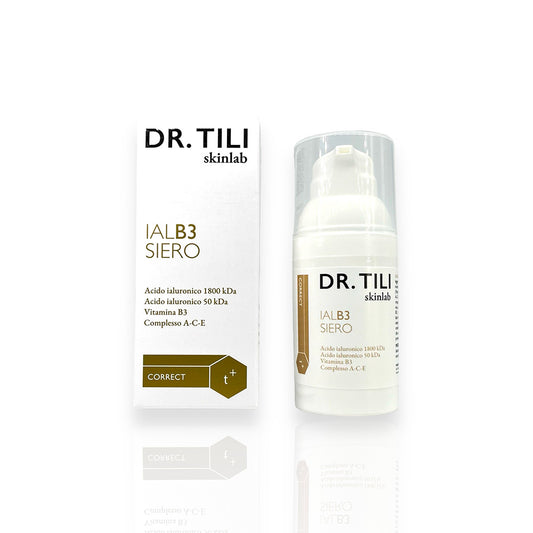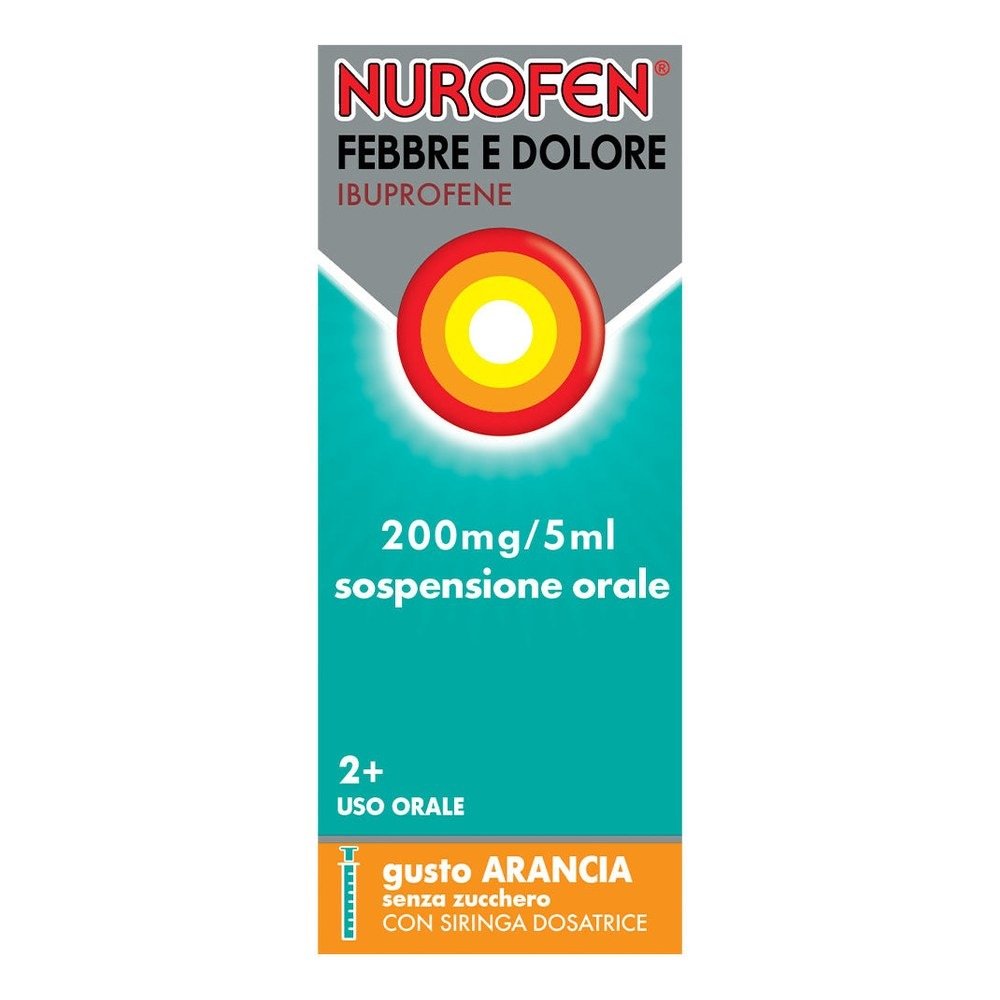RECKITT BENCKISER H.(IT.) SpA
Nurofen Fever and Pain 200mg/5ml oral suspension orange flavour 100ml
Nurofen Fever and Pain 200mg/5ml oral suspension orange flavour 100ml

Pickup available at Farmacia Tili
Usually ready in 24 hours
PRODUCT NET WEIGHT
PRODUCT NET WEIGHT
EAN
EAN
034102424
MINSAN
MINSAN
034102424
Nurofen Fever and Pain 200mg/5ml sugar-free orange flavour oral suspension 100ml with dosing syringe is a medicine formulated for the symptomatic treatment of fever and mild to moderate pain . Each ml of suspension contains 40 mg ibuprofen , an active ingredient known for its anti-inflammatory and analgesic properties. The formulation is sugar-free, making it suitable for those who need to control their sugar intake. The product is available in a practical 100ml format, accompanied by a dosing syringe for precise and safe dosing. The orange flavour makes administration more pleasant, especially for children. The suspension is suitable for adults and children over 2 years of age, offering a versatile option for the relief of pain and fever.
ACTIVE INGREDIENTS
Active ingredients contained in Nurofen Fever and Pain 200mg/5ml orange flavour oral suspension 100ml with dosing syringe - What is the active ingredient in Nurofen Fever and Pain 200mg/5ml orange flavour oral suspension 100ml with dosing syringe?
NUROFEN FEVER AND PAIN 200 mg/5ml Oral Suspension Each ml of oral suspension contains Active ingredient: ibuprofen 40 mg. Excipients with known effect: liquid maltitol, propylene glycol (present in the strawberry flavour), wheat starch (present in the orange flavour) and sodium. For the full list of excipients, see section 6.1.
EXCIPIENTS
Composition of Nurofen Fever and Pain 200mg/5ml oral suspension orange flavour 100ml with dosing syringe - What does Nurofen Fever and Pain 200mg/5ml oral suspension orange flavour 100ml with dosing syringe contain?
Nurofen Fever and Pain 200mg/5ml sugar-free orange flavoured oral suspension Polysorbate 80, glycerin, maltitol syrup, sodium saccharin, citric acid, sodium citrate, xanthan gum, sodium chloride, orange flavouring, domiphene bromide, purified water. Nurofen Fever and Pain 200mg/5ml sugar-free strawberry flavoured oral suspension Polysorbate 80, glycerin, maltitol syrup, sodium saccharin, citric acid, sodium citrate, xanthan gum, sodium chloride, strawberry flavouring, domiphene bromide, purified water.
DIRECTIONS
Therapeutic indications Nurofen Fever and Pain 200mg/5ml oral suspension orange flavour 100ml with dosing syringe - Why is Nurofen Fever and Pain 200mg/5ml oral suspension orange flavour 100ml with dosing syringe used? What is it used for?
Symptomatic treatment of fever and mild to moderate pain.
CONTRAINDICATIONS SIDE EFFECTS
Contraindications Nurofen Fever and Pain 200mg/5ml oral suspension orange flavour 100ml with dosing syringe - When should Nurofen Fever and Pain 200mg/5ml oral suspension orange flavour 100ml with dosing syringe not be used?
• Hypersensitivity to ibuprofen or to any of the excipients listed in section 6.1. • Children under 2 years of age or weighing less than 10 kg. • The medicinal product is contraindicated in patients who show or have previously shown hypersensitivity (e.g. asthma, rhinitis, angioedema or urticaria) to acetylsalicylic acid or other analgesics, antipyretics, nonsteroidal anti-inflammatory drugs (NSAIDs), particularly when hypersensitivity is associated with nasal polyposis and asthma. • Active peptic ulcer. • Severe renal or hepatic insufficiency (see section 4.4). • Severe cardiac insufficiency (see section 4.4). • History of gastrointestinal bleeding or perforation related to previous NSAID therapy. • History of recurrent peptic ulcer/haemorrhage (two or more distinct episodes of proven ulceration or bleeding). • Concomitant use of NSAIDs, including specific COX-2 inhibitors. • During the last trimester of pregnancy (see section 4.6).
DOSAGE
Quantity and method of taking Nurofen Fever and Pain 200mg/5ml oral suspension orange flavour 100ml with dosing syringe - How do you take Nurofen Fever and Pain 200mg/5ml oral suspension orange flavour 100ml with dosing syringe?
Posology Undesirable effects may be minimised by using the lowest effective dose for the shortest duration necessary to control symptoms (see section 4.4). Adults and adolescents over 12 years ( ≥ 43 kg body weight) : 200-400 mg ibuprofen (corresponding to 5 - 10 ml of oral suspension), 2-3 times a day. The interval between doses should not be less than 4 hours. Do not exceed the maximum dose of 1200 mg (30 ml) in 24 hours. Use in adults is especially indicated in patients with dysphagia. Elderly : no changes to the dosage regimen are required. Paediatric population Children between 2 - 12 years (10 - 43 kg body weight) The daily dose is structured according to the weight and age of the patient. The daily dose of 20-30 mg/kg of body weight, divided 3 times a day at intervals of 6-8 hours, can be administered according to the following schedule (do not exceed the recommended doses).
| Weight | Approximate age | Single dose in ml | Maximum number of administrations/day |
| From 10 Kg | 2 - 3 years | 2.5 ml | 3 in 24 hours |
| From 15 Kg | 4 - 6 years | 3.75 ml | |
| From 20 Kg | 7 - 9 years | 5 ml | |
| From 28 to 43 Kg | 10 - 12 years | 7.5 ml |
Special populations: in case of post-vaccination fever refer to the dosage indicated above, it is recommended to administer a single dose (2.5 ml) followed, if necessary, by another dose after 6 hours. Do not administer more than two doses in 24 hours. Consult your doctor if the fever does not decrease. The product is intended for short-term treatments. If the use of the medicine is necessary for more than 3 days in children over 2 years of age, in adolescents and adults, or in case of worsening of the symptoms, a doctor should be consulted. Method of administration Oral administration should be done using the dosing syringe or measuring spoon provided with the product. The graduated scale on the body of the syringe clearly shows the notches for the different dosages: in particular the 2.5 ml notch corresponding to 100 mg of ibuprofen, the 3.75 ml notch corresponding to 150 mg of ibuprofen and the 5 ml notch corresponding to 200 mg of ibuprofen. The measuring spoon has two concave blades at the ends for the different dosages: the 1.25 ml notch corresponding to 50 mg of ibuprofen, the 2.5 ml notch corresponding to 100 mg of ibuprofen and the 5 ml notch corresponding to 200 mg of ibuprofen. Patients who suffer from stomach problems can take the medicine during meals. Instructions for using the measuring syringe : 1 - Unscrew the cap by pushing it downwards and turning it to the left. 2 - Insert the tip of the syringe fully into the hole in the undercap. 3 - Shake well. 4 - Turn the bottle upside down, then, holding the syringe firmly, gently pull the plunger downwards, allowing the suspension to flow into the syringe up to the mark corresponding to the desired dose. 5 - Put the bottle back in an upright position and remove the syringe by gently rotating it. 6 - Insert the tip of the syringe into your mouth, and apply gentle pressure on the plunger to allow the suspension to flow out. 7 - After use, screw the cap on to close the bottle and wash the syringe with hot water. Leave it to dry, keeping it out of the sight and reach of children.
CONSERVATION
Storage Nurofen Fever and Pain 200mg/5ml oral suspension orange flavour 100ml with dosing syringe - How do you store Nurofen Fever and Pain 200mg/5ml oral suspension orange flavour 100ml with dosing syringe?
Do not store above 30°C.
WARNINGS
Warnings Nurofen Fever and Pain 200mg/5ml oral suspension orange flavour 100ml with dosing syringe - About Nurofen Fever and Pain 200mg/5ml oral suspension orange flavour 100ml with dosing syringe it is important to know that:
Undesirable effects may be minimised by using the lowest effective dose for the shortest duration necessary to control symptoms (see sections below on gastrointestinal and cardiovascular risks). The use of Nurofen Fever and Pain should be avoided in conjunction with NSAIDs, including selective COX-2 inhibitors. Analgesics, antipyretics, non-steroidal anti-inflammatory drugs may cause hypersensitivity reactions, potentially serious (anaphylactoid reactions), even in subjects not previously exposed to this type of drug. The risk of hypersensitivity reactions after taking ibuprofen is greater in subjects who have experienced such reactions after the use of other analgesics, antipyretics, non-steroidal anti-inflammatory drugs and in subjects with bronchial hyperreactivity (asthma), nasal polyposis or previous episodes of angioedema (see sections 4.2 and 4.8). Gastrointestinal bleeding, ulceration and perforation: Gastrointestinal bleeding, ulceration and perforation, which can be fatal, have been reported with all NSAIDs at anytime during treatment, with or without warning symptoms or a previous history of serious GI events. There is a risk of impaired renal function in dehydrated children and adolescents (see sections 4.3 and 4.8). Elderly: Elderly patients have an increased frequency of adverse reactions to NSAIDs especially gastrointestinal bleeding and perforation, which may be fatal (see section 4.2). The risk of gastrointestinal bleeding, ulceration or perforation is higher with increasing NSAID doses, in the elderly and in patients with a history of ulcer, particularly if complicated with haemorrhage or perforation (see section 4.3). These patients should start treatment on the lowest dose available. Concomitant use of protective agents (e.g. misoprostol or proton pump inhibitors) should be considered for these patients, and also for patients taking low dose aspirin or other drugs likely to increase gastrointestinal risk (see section 4.5). Patients with a history of gastrointestinal toxicity, particularly when elderly, should report any unusual gastrointestinal symptoms (especially gastrointestinal bleeding) particularly in the initial stages of treatment. Caution should be advised in patients taking concomitant medications which could increase the risk of ulceration or bleeding, such as oral corticosteroids, anticoagulants such as warfarin, selective serotonin reuptake inhibitors or anti-platelet agents such as acetylsalicylic acid (aspirin) (see section 4.5). When gastrointestinal bleeding or ulceration occurs in patients receiving Nurofen Fever and Pain, the treatment should be withdrawn. NSAIDs should be administered with caution to patients with a history of gastrointestinal disease (ulcerative colitis, Crohn's disease) as these conditions may be exacerbated (see section 4.8). Severe skin reactions: Serious skin reactions, some of them fatal, including exfoliative dermatitis, Stevens-Johnson syndrome, and toxic epidermal necrolysis, have been reported rarely in association with the use of NSAIDs (see section 4.8). Patients appear to be at highest risk early in the course of therapy: the onset of the reaction occurring in the majority of cases within the first month of treatment. Acute generalised exanthematous pustulosis (AGEP) has been reported in connection with medicinal products containing ibuprofen. Ibuprofen should be discontinued at the first appearance of signs and symptoms of severe skin reactions, such as rash, mucosal lesions, or any other sign of hypersensitivity. Masking of symptoms of underlying infections: Nurofen Fever and Pain may mask the symptoms of infection, which may delay the initiation of adequate treatment and therefore worsen the outcome of the infection. This has been observed in community-acquired bacterial pneumonia and in bacterial complications of chickenpox. When Nurofen Fever and Pain is administered for the relief of infection-related fever or pain, monitoring of the infection is advised. In non-hospital settings, the patient should seek medical advice if symptoms persist or worsen. Chickenpox may exceptionally cause serious infectious complications of the skin and soft tissue. To date, the contribution of NSAIDs to the worsening of such infections cannot be excluded, therefore it is recommended to avoid the use of Nurofen Fever and Pain in case of chickenpox. Caution is advised (discuss with your doctor or pharmacist) before initiating treatment in patients with a history of hypertension and/or heart failure as fluid retention, hypertension and oedema have been reported in association with NSAID therapy. Clinical trial and epidemiological data suggest that use of ibuprofen, particularly at high doses (2400 mg/day) and in long term treatment, may be associated with a small increased risk of arterial thrombotic events (for example myocardial infarction or stroke). Overall, epidemiological studies do not suggest that low doses of ibuprofen (e.g. ≤ 1200 mg/day) are associated with an increased risk of myocardial infarction. Patients with uncontrolled hypertension, congestive heart failure, established ischaemic heart disease, peripheral arterial disease, and/or cerebrovascular disease should only be treated with ibuprofen after careful consideration. Similar considerations should be made before starting long-term treatment in patients with risk factors for cardiovascular events (e.g. hypertension, hyperlipidaemia, diabetes mellitus, smoking). The use of ibuprofen, acetylsalicylic acid or other analgesics, antipyretics, nonsteroidal anti-inflammatory drugs requires particular caution: • in case of asthma or allergic diseases in progress or in the past: possible deterioration of bronchoconstriction; • in the presence of coagulation defects: reduction of coagulability; • in the presence of renal, cardiac or hypertension diseases: possible critical reduction of renal function (especially in subjects with impaired renal or hepatic function, heart failure or in treatment with diuretics), nephrotoxicity or fluid retention; • in the presence of liver diseases: possible hepatotoxicity; • rehydrate the subject before the start and during treatment in case of dehydration (for example due to fever, vomiting or diarrhoea). The following precautions are relevant during prolonged treatment: • monitor for signs or symptoms of gastrointestinal ulceration or bleeding; • monitor for signs or symptoms of hepatotoxicity; • monitor for signs or symptoms of nephrotoxicity; • if visual disturbances occur (blurred or reduced vision, scotomas, alteration of colour perception): stop treatment and consult an ophthalmologist; • if signs or symptoms of meningitis occur: evaluate the rare possibility that it is due to the use of ibuprofen (aseptic meningitis; more frequent in subjects with systemic lupus erythematosus and mixed connective tissue disease or other collagen diseases) (see section 4.8). Since Nurofen Fever and Pain contains liquid maltitol , patients with rare hereditary problems of fructose intolerance should not take this medicine. It may have a mild laxative effect. The caloric value of maltitol is 2.3 kcal/g. Nurofen Fever and Pain does not contain sugar and is therefore suitable for those patients who need to control their sugar and calorie intake. This medicine contains less than 1 mmol sodium (23 mg) per dose of up to 12 ml, that is to say essentially “sodium-free”. This medicine contains approximately 27.6 mg sodium per 15 ml dose, equivalent to approximately 1.4% of the WHO recommended maximum daily intake of 2 g sodium for an adult. NUROFEN FEVER AND PAIN 200 mg/5 ml sugar-free strawberry flavour oral suspension contains approximately 16.45 mg propylene glycol (present in the strawberry flavour) per 5 ml. NUROFEN FEVER AND PAIN 200 mg/5 ml sugar-free orange flavour oral suspension contains only a very small amount of gluten (from the wheat starch present in the orange flavour). This medicine is considered <
INTERACTIONS
Interactions Nurofen Fever and Pain 200mg/5ml oral suspension orange flavour 100ml with dosing syringe - Which medicines or foods can modify the effect of Nurofen Fever and Pain 200mg/5ml oral suspension orange flavour 100ml with dosing syringe?
Ibuprofen should be avoided in combination with : • Acetylsalicylic acid (aspirin): unless low dose acetylsalicylic acid (not more than 75 mg daily), as is common clinical practice, has been advised by your doctor, as it may increase the risk of adverse reactions (see section 4.4). Experimental data indicate that ibuprofen may inhibit the effects of low dose acetylsalicylic acid on platelet aggregation when the drugs are administered concomitantly. However, the limited data and the uncertainties regarding the application of ex vivo data to the clinical situation do not allow definitive conclusions to be drawn on regular ibuprofen use; clinically relevant effects from occasional ibuprofen use are unlikely (see section 5.1). • Other NSAIDs including cyclooxygenase-2 selective inhibitors : avoid the concomitant use of two or more analgesics, antipyretics, nonsteroidal anti-inflammatory drugs: increased risk of adverse effects (see section 4.4). Ibuprofen should be used with caution in association with: • corticosteroids: increased risk of gastrointestinal ulceration or bleeding (see section 4.4); • quinolone antibiotics: data from animal studies indicate that NSAIDs may increase the risk of convulsions associated with quinolone antibiotics. Patients taking NSAIDs and quinolones may have an increased risk of developing convulsions; • anticoagulants, such as warfarin: NSAIDs may increase the effects of anticoagulants (see section 4.4); • antiplatelet agents and selective serotonin reuptake inhibitors (SSRIs): increased risk of gastrointestinal bleeding (see section 4.4); • antidiabetics: possible increase in the effect of sulfonylureas; • antivirals, such as ritonavir: possible increase in the concentration of NSAIDs; • ciclosporin: increased risk of nephrotoxicity; • mifepristone: NSAIDs must not be administered in the 8-12 days following mifepristone intake as they may reduce its efficacy; • cytotoxics, such as methotrexate: reduced excretion (increased risk of toxicity); • lithium: reduced excretion (increased risk of toxicity); • tacrolimus: increased risk of nephrotoxicity; • uricosurics, such as probenecid: slows the excretion of NSAIDs (increase in plasma concentrations); • methotrexate: potential increase in the plasma concentration of methotrexate; • zidovudine: increased risk of haematotoxicity when NSAIDs are used in combination with zidovudine. There is evidence of an increased risk of haemarthrosis and haematomas in HIV (+) haemophiliacs when treated concomitantly with zidovudine and ibuprofen; • diuretics, ACE inhibitors and Angiotensin II antagonists: NSAIDs may reduce the effect of diuretics and other antihypertensive drugs. In some patients with compromised renal function (for example dehydrated patients or elderly patients with compromised renal function) the co-administration of an ACE inhibitor or an angiotensin II antagonist and agents that inhibit the cyclo-oxygenase system may lead to further deterioration of renal function, including possible acute renal failure, which is usually reversible. These interactions should be considered in patients taking Nurofen Fever and Pain concomitantly with ACE inhibitors or angiotensin II antagonists. Therefore, the combination should be administered with caution, especially in elderly patients. Patients should be adequately hydrated and consideration should be given to monitoring renal function after initiation of concomitant therapy and periodically thereafter; • Cardiac glycosides: NSAIDs may worsen heart failure, reduce GFR (glomerular filtration rate) and increase plasma glycoside levels.
SIDE EFFECTS
Like all medicines, Nurofen Fever and Pain 200mg/5ml oral suspension orange flavour 100ml with dosing syringe can cause side effects - What are the side effects of Nurofen Fever and Pain 200mg/5ml oral suspension orange flavour 100ml with dosing syringe?
The following list of undesirable effects includes all those that have been recognized during treatment with ibuprofen for short periods of treatment and for daily doses up to a maximum of 1200 mg. In case of therapies for chronic or prolonged diseases at high doses, other undesirable effects may occur. The adverse reactions associated with the administration of ibuprofen are listed below according to the system organ class and by frequency. The frequencies are defined as : Very common (≥1/10); Common (≥1/100, <1/10); Uncommon (≥1/1,000, <1/100); Rare (≥1/10,000, <1/1,000); Very rare (<1/10,000); Not known (the frequency cannot be estimated from the available data). Within each frequency grouping, undesirable effects are presented in decreasing order of seriousness.
| Classification by systems and organs | Frequency | Adverse reaction |
| Infections and infestations | Rare | Cystitis, rhinitis |
| Very rare | Worsening of infection-related inflammation (e.g. development of necrotizing fasciitis), in exceptional cases severe skin infections and soft tissue complications have been reported during chickenpox infection. | |
| Pathologies of the haemolymphopoietic system | Very rare | Disorders of hematopoiesis ¹ |
| Immune system disorders | Uncommon | Hypersensitivity reactions manifested by urticaria and itching² |
| Very rare | Severe hypersensitivity reactions including swelling of the face, tongue and larynx, dyspnea, tachycardia, hypotension (anaphylaxis, angioedema or severe shock). | |
| Metabolism and nutrition disorders | Not known | Fluid retention and decreased appetite³. |
| Psychiatric disorders | Not known | Irritability |
| Rare | Depression, insomnia, difficulty concentrating, emotional lability, visual and hearing disturbances. | |
| Nervous system disorders | Uncommon | Headache, dizziness, drowsiness, convulsions. |
| Very rare | Aseptic meningitis 4 | |
| Rare | Cerebrovascular hemorrhage | |
| Eye pathologies | Rare | Dry eyes |
| Ear and labyrinth pathologies | Not known | Tinnitus |
| Heart disease | Not known | Heart failure and edema 5 . |
| Rare | Palpitations | |
| Vascular pathologies | Not known | Hypertension 5 and shock |
| Respiratory, thoracic and mediastinal pathologies | Not known | Respiratory tract reactivity including asthma, laryngeal obstruction, bronchospasm or apnea, dyspnea. |
| Gastrointestinal disorders | Uncommon | Abdominal pain, nausea and dyspepsia 6 . |
| Rare | Diarrhea, flatulence, dry mouth, constipation and vomiting. | |
| Very rare | Peptic ulcer, perforation or gastrointestinal bleeding, melena and haematemesis 7 . Mouth ulcerations and gastritis. | |
| Not known | Exacerbation of colitis and Crohn's disease 8 , pancreatitis, duodenitis, esophagitis. | |
| Hepatobiliary pathologies | Very rare | Liver dysfunction, hepatitis, jaundice, hepatorenal syndrome, hepatic necrosis, hepatic failure. |
| Skin and subcutaneous tissue disorders | Uncommon | Various skin rashes² |
| Very rare | Bullous reactions including Stevens-Johnson syndrome, erythema multiforme and toxic epidermal necrolysis². | |
| Rare | Exfoliative dermatitis, alopecia, photosensitivity reactions. | |
| Not known | Drug reaction with eosinophilia and systemic symptoms (DRESS syndrome), acute generalized exanthematous pustulosis (AGEP). | |
| Kidney and urinary disorders | Rare | Tubular necrosis, glomerular nephritis, polyuria, hematuria. |
| Very rare | Acute renal failure 9 | |
| Diagnostic tests | Rare | Decrease in hematocrit levels |
| Very rare | Decrease in hemoglobin levels |
Description of selected adverse reactions 1 Haematopoietic disorders including anaemia, aplastic anaemia, haemolytic anaemia (positive Coombs test), leucopenia, neutropenia, thrombocytopenia (with or without purpura), eosinophilia, pancytopenia and agranulocytosis. Early symptoms may include fever, sore throat, superficial mouth ulcers, flu-like symptoms, marked fatigue, epistaxis and haemorrhage. Rarely, congestive heart failure in patients with impaired cardiac function. ² Hypersensitivity reactions: These reactions include a) non-specific allergic reactions and anaphylaxis, fever, chills, b) respiratory tract reactivity including asthma, aggravated asthma, bronchospasm (see sections 4.3 and 4.4) or dyspnoea or c) various skin disorders including various rashes (including maculopapular in nature), pruritus, urticaria with or without angioedema, purpura, angioedema and very rarely, bullous and exfoliative dermatitis including toxic epidermal necrolysis, Stevens-Johnson syndrome and erythema multiforme. ³ Decreased appetite: Generally resolves rapidly upon discontinuation of treatment (see section 4.4). 4. The pathogenetic mechanism of drug-induced aseptic meningitis is not fully understood. However, available data on aseptic meningitis related to NSAID administration suggest an immune reaction (due to a temporal relationship with drug intake and the disappearance of symptoms after treatment discontinuation). Of note, single cases of aseptic meningitis symptoms (such as stiff neck, numbness in the neck, headache, nausea, vomiting, fever and disorientation) have been observed during treatment with ibuprofen in patients with autoimmune diseases (such as systemic lupus erythromatosus, mixed connective tissue disease). 5 Heart failure and oedema: Clinical trial and epidemiological data suggest that use of ibuprofen, particularly at high doses (2400 mg/day) and in long-term treatment, may be associated with a small increased risk of arterial thrombotic events (for example myocardial infarction or stroke) (see section 4.4). Congestive heart failure in patients with compromised cardiac function. 6 The most commonly observed adverse events are gastrointestinal in nature. Gastric disturbances may be reduced by taking the medicinal product with food. 7 Peptic ulcers, perforation or gastrointestinal bleeding, melaena and haematemesis, sometimes fatal, may occur. 8 Exacerbation of colitis and Crohn's disease (see section 4.4). 9 Acute renal failure, especially in case of long-term therapy, associated with increased serum urea levels and oedema. Papillary necrosis may occur. Reporting of suspected adverse reactions Reporting suspected adverse reactions that occur after authorisation of the medicinal product is important. It allows continued monitoring of the benefit/risk balance of the medicinal product. Healthcare professionals are asked to report any suspected adverse reactions via the national reporting system at: https://www.aifa.gov.it/content/segnalazioni-reazioni-avverse.
OVERDOSE
Overdose Nurofen Fever and Pain 200mg/5ml oral suspension orange flavour 100ml with dosing syringe - What are the risks of Nurofen Fever and Pain 200mg/5ml oral suspension orange flavour 100ml with dosing syringe in case of overdose?
Toxicity Signs and symptoms of toxicity have not generally been observed at doses below 100 mg/kg in children or adults. However, in some cases supportive treatment may be necessary. Children have been observed to show signs and symptoms of toxicity after ingestion of ibuprofen at doses of 400 mg/kg or greater. The half-life of the drug following overdose is 1.5-3 hours. Symptoms Most patients who accidentally ingest clinically relevant amounts of ibuprofen will experience symptoms within 4-6 hours. The most commonly reported symptoms of overdose include nausea, vomiting, abdominal pain, lethargy and somnolence. Central nervous system (CNS) effects include headache, tinnitus, dizziness, convulsions and loss of consciousness. Nystagmus, metabolic acidosis, hypothermia, renal effects, gastrointestinal bleeding, coma, apnea, diarrhoea and CNS and respiratory depression have also been reported rarely. Disorientation, excitement, fainting and cardiovascular toxicity including hypotension, bradycardia and tachycardia have been reported. Renal failure and liver damage are possible in cases of significant overdose. In cases of severe poisoning, metabolic acidosis and prolongation of prothrombin time (INR) may occur, probably due to interference with the action of circulating clotting factors. In asthmatic subjects, exacerbation of symptoms of the disease may occur. Treatment There is no specific antidote for ibuprofen overdose. Therefore, symptomatic and supportive treatment is indicated in the event of overdose and should include maintaining a patent airway and monitoring cardiac function and vital signs until the patient is stabilised. Particular attention should be paid to monitoring blood pressure, acid-base balance and any gastrointestinal bleeding. Administration of activated charcoal should be considered within one hour of ingestion of a potentially toxic amount. Alternatively, gastric lavage should be considered within one hour of ingestion of a potentially life-threatening overdose in adults. Adequate diuresis should be ensured and renal and hepatic function should be closely monitored. The patient should remain under observation for at least four hours following ingestion of a potentially toxic amount. Any occurrence of frequent or prolonged convulsions should be treated with intravenous diazepam or lorazepam. If ibuprofen has already been absorbed, alkaline substances should be administered to promote excretion of the acidic ibuprofen in the urine. Bronchodilators should be administered in cases of asthma. Other supportive measures may be necessary depending on the clinical condition of the patient. For more information, contact your local poison control center.
PREGNANCY AND BREASTFEEDING
If you are pregnant or breast-feeding, think you may be pregnant or are planning to have a baby, ask your doctor for advice before taking Nurofen Fever and Pain 200mg/5ml oral suspension orange flavour 100ml with dosing syringe.
It is unlikely that subjects under the age of 12 years will become pregnant or breast-feed. However, in such circumstances the following considerations should be taken into account. Pregnancy During the first and second trimester of pregnancy, administration of ibuprofen should be avoided. Ibuprofen is contraindicated during the third trimester of pregnancy. Inhibition of prostaglandin synthesis may adversely affect the pregnancy and/or embryo/foetal development. Results of epidemiological studies suggest an increased risk of miscarriage and of cardiac malformation and gastroschisis after use of a prostaglandin synthesis inhibitor in early pregnancy. The absolute risk of cardiac malformations increased from less than 1%, up to approximately 1.5%. The risk was believed to increase with dose and duration of therapy. In animals, administration of prostaglandin synthesis inhibitors has been shown to result in increased pre- and post-implantation loss and embryo-foetal mortality. In addition, an increased incidence of various malformations, including cardiovascular, has been reported in animals given prostaglandin synthesis inhibitors during the organogenetic period. During the third trimester of pregnancy, all prostaglandin synthesis inhibitors may expose the fetus to: - cardiopulmonary toxicity (with premature closure of the ductus arteriosus and pulmonary hypertension); - renal dysfunction which may progress to renal failure with oligo



